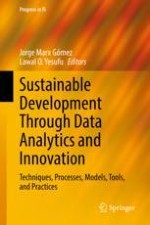2022 | OriginalPaper | Chapter
Achieving Sustainable Development Through Green HRM: The Role of HR Analytics
Authors : Shatha M. Obeidat, Shahira O. Abdalla
Published in: Sustainable Development Through Data Analytics and Innovation
Publisher: Springer International Publishing
Activate our intelligent search to find suitable subject content or patents.
Select sections of text to find matching patents with Artificial Intelligence. powered by
Select sections of text to find additional relevant content using AI-assisted search. powered by
